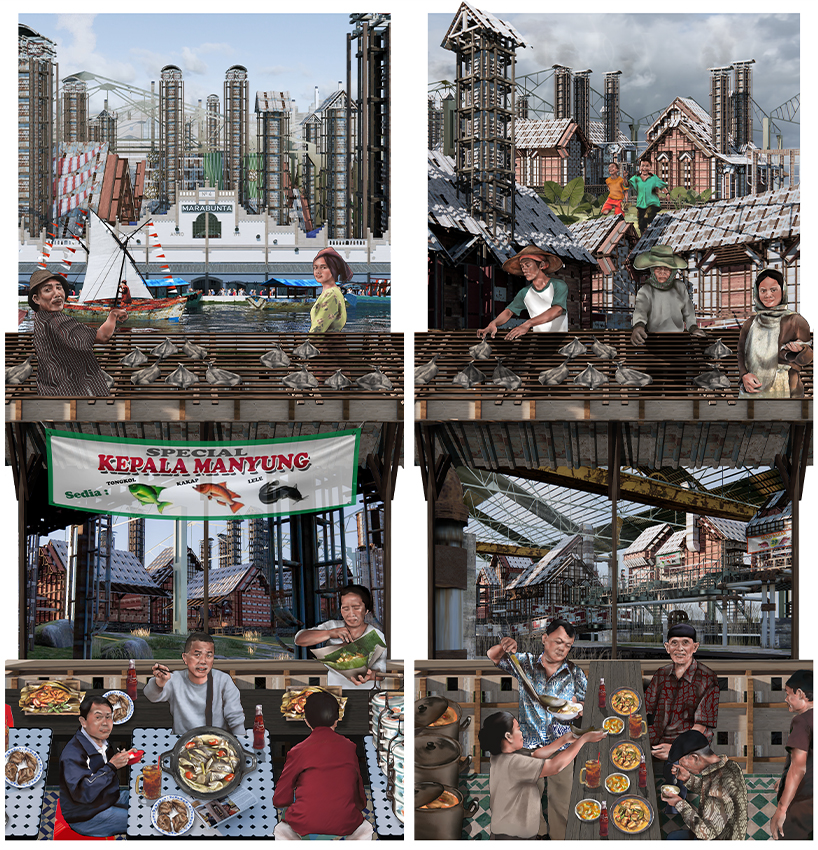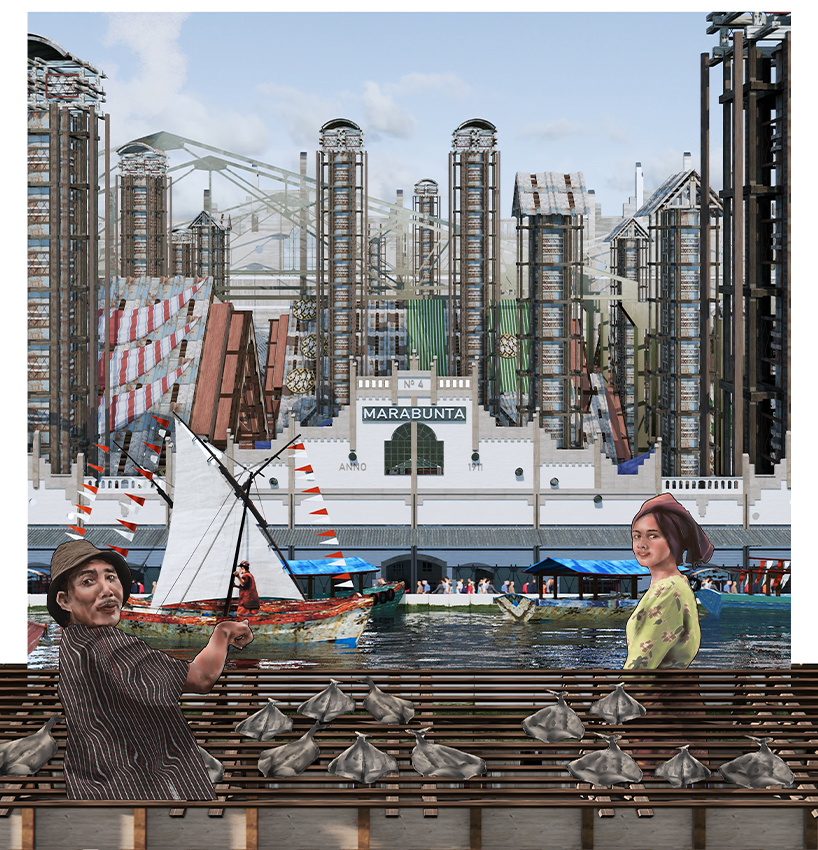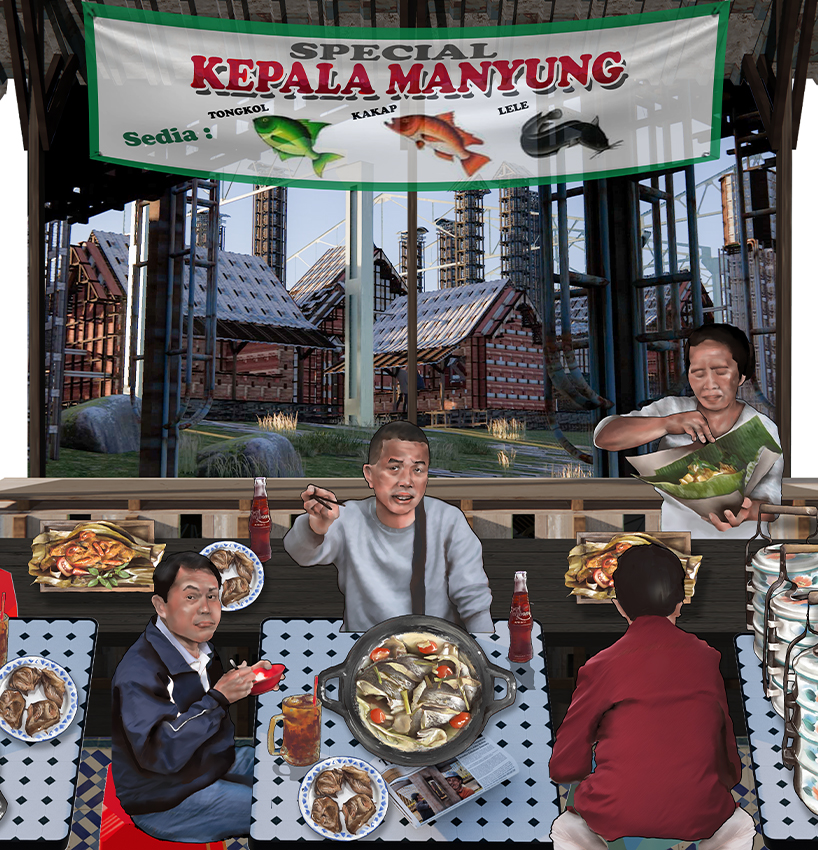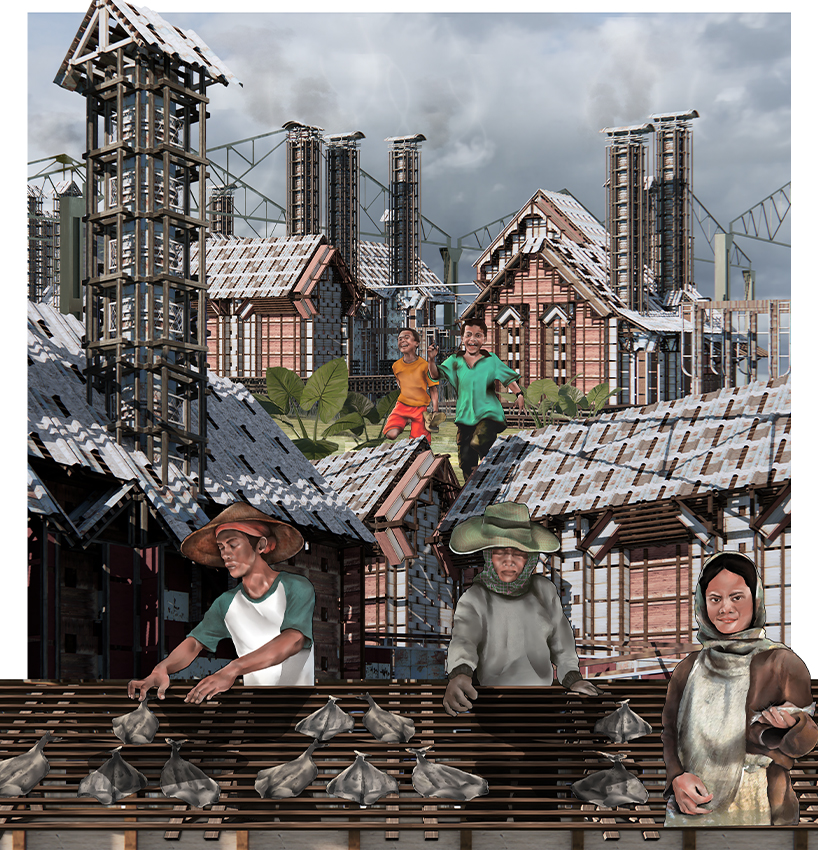‘the smoked county relish’ project revokes poverty and technology disjunction in indonesia
‘The Smoked County Relish’ by Daniel Jansen Harianto
‘The Smoked County Relish’ is a thesis project by Daniel Jansen Harianto, developed as part of his bachelor’s degree in Architecture. For this proposal, he envisions transforming Indonesia’s abandoned coastal civilization into a resilient hub through the adaptive reuse of leftover materials and the introduction of collaborative, easy-to-access technologies. Specifically, Harianto’s thesis spotlights the city of Semarang in the north of Java Island, famous for preserving the age-old tradition of smoked-fish culture.
‘Advanced technologies should be accessible at any level. Appropriately, introducing an algorithm scheme will help measure the amount of the most reachable and efficient material for construction, thus could be suitable for the indigenous to build on their own later,’ writes Harianto.
With that said, the following renderings capture a new future for the people of Semarang, one that is filled with joy, economic uplift, and continuous celebration of its maritime traditions and architectural context.

all visuals © Daniel Jansen Harianto
uplifting semarang through relocation + adaptive reuse
Unfortunately, while the people of Semarang pride themselves in being the keepers of maritime culture, natural degradation is threatening to push them into a deep slump of poverty. This, unfortunately, coudl reinforce the secondary citizen stigma that has long permeated their lives. ‘If we neglect them all, how do we maintain our coastal ecosystem, especially the ones involved from the beginning, against cultural extinction?’, questions the designer.
The right way to go about it, Harianto says, is to sympathize without outsmarting the indigenous community. After careful research into the local conditions, he first proposes securing the perimeter of the smoked fish compound currently sprawled along the Semarang riverbank. This suggestion arises from a belief that locals will lose the land to subsidence a few decades from now. Therefore, ‘immediate relocation is necessary, distinctly to save the people’s economic activity,’ states Harianto.
Meanwhile, the designer also suggests repurposing an abandoned warehouse beside the canal to inject more activity and attraction to the area — hopefully creating a sort of cultural landmark on a global scale.

smoking fish areas: a symbol of history and identity, gradually nurturing and turning the economic wheel
promoting collaborative and accessible technologies
In conjecture with site potentials, the precinct includes leftover building materials piled around the streets. These can be supervised and examined to develop future architectural modules that maintain the local character. For that, Harianto proposes to build an algorithm that can calculate and measure the type and amount of materials accessed and used for construction. Once the settings are completed, he proposes to share his findings with the locals, offering them the freedom and agency to ultimately be left to build among themselves, collectively and sustainably.

maritime culture identity is widespread in culinary habits, especially in the way of serving authentic feasts

smokers’ activity conducted as the ancestors’ would


